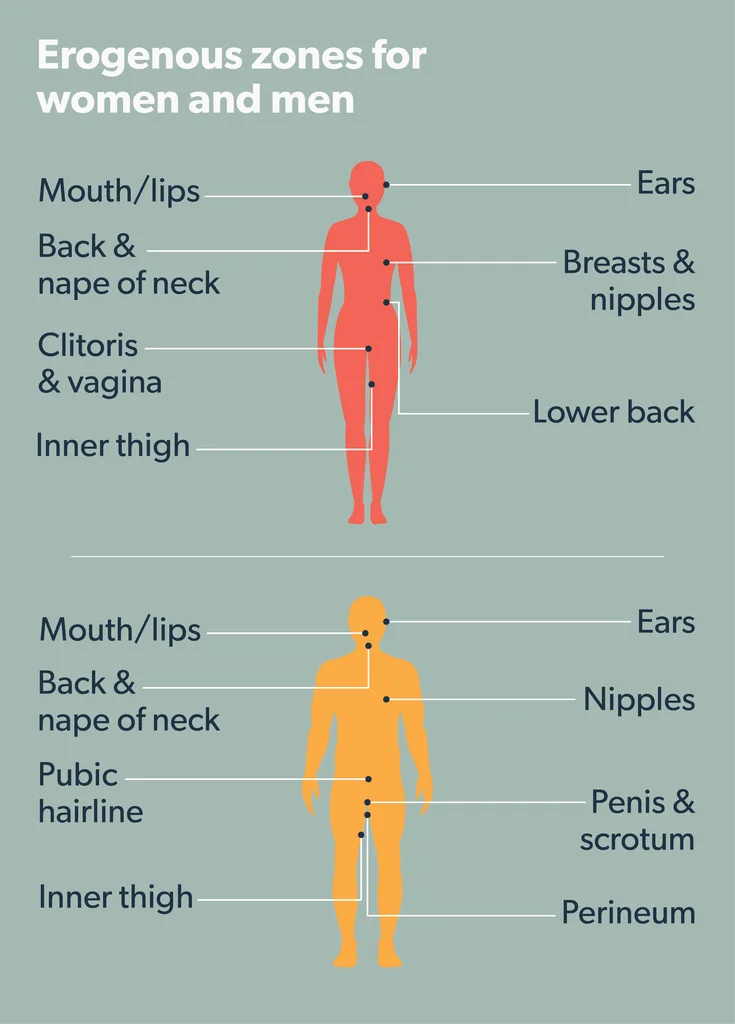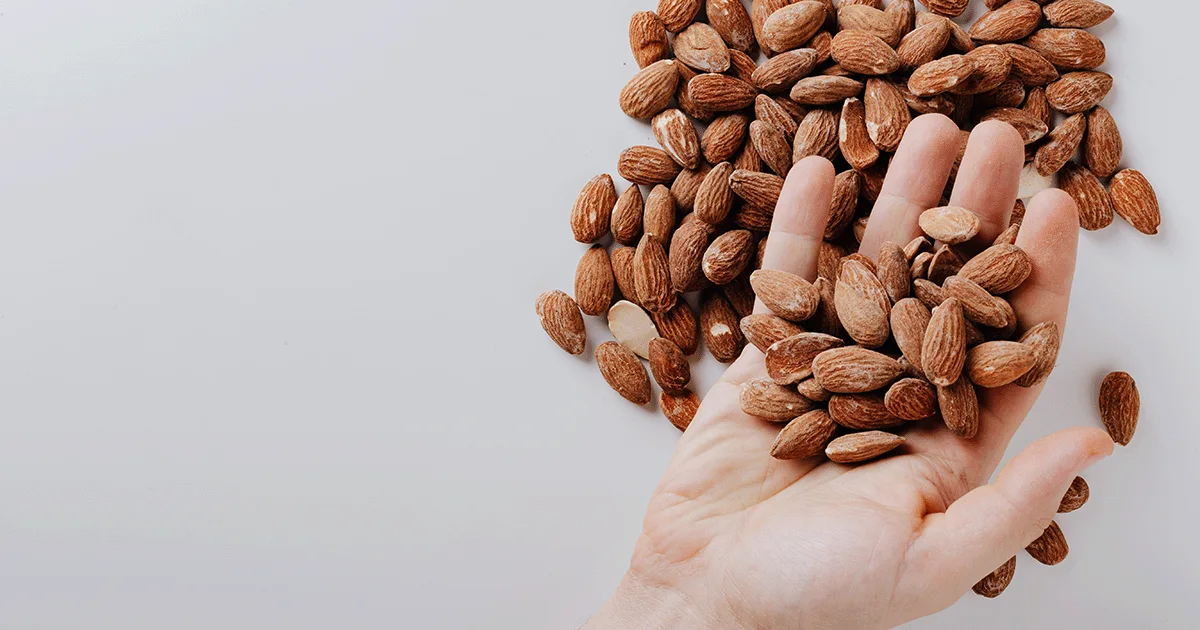Here's what we'll cover
Here's what we'll cover
While many areas of sexuality are better understood now than in the past, the orgasm remains a somewhat mysterious phenomenon.
What exactly is an orgasm? How can it happen without physical stimulation? What is a prostate orgasm and is there really a G-spot? Let’s find out the answers to these and other questions about the “Big O.”
What is an orgasm?
Orgasm, also called sexual climax, is the moment when you reach peak sexual pleasure. As sexual excitement mounts, your muscles tense, flex, and contract involuntarily while body tissues swell with blood. At climax, there’s a feeling of intense pleasure in the genitals and throughout the body as sexual tension is released through an orgasm.
When we orgasm our brain becomes flooded with dopamine—a chemical messenger that’s often described as the “pleasure hormone”—which produces intense feelings of well-being.
Orgasms don’t only occur during sex or masturbation. The brain plays an important role in sexual stimulation and climax. For some people, orgasms can even happen when they simply imagine an erotic scene (Wise, 2016).
Others don’t even need their genitals stimulated to be able to orgasm—orgasms can occur when different erogenous zones (for instance, the nipples) are stimulated (Krassioukov, 2017).

Types of orgasms for men
For many men, orgasms happen when through penetrative sex or masturbation when the penis is stimulated. But men can also orgasm by exciting other erotic areas, including the prostate and anus.
Penile orgasms
Male orgasms usually happen after masturbation or penetrative vaginal, anal, or oral sex. Typically orgasms happen together with ejaculation, but that’s not always the case.
Penile orgasms are accompanied by fast breathing, rapid heartbeat, and raised blood pressure. They’re also linked to powerful, pleasurable pelvic muscle contractions and can come with facial grimacing. During and after a male orgasm, levels of the hormones prolactin and oxytocin rise (Alwaal, 2015).
Prostate orgasms
Stimulating your penis isn’t the only way to have an orgasm. Some men can reach have prostate-induced orgasms through prostate stimulation. Not much is known about the physiology of prostate orgasms because no good clinical studies have been done on the subject (Levin, 2018).
Prostate orgasms can be produced in a couple of ways. You can stimulate the prostate gland by massaging it through the perineum, which is the tissue running from the testicles to the anus. You can also internally massage the prostate with your fingers.
The prostate can also be stimulated with a special vibrator that’s inserted into the rectum and can access the gland through the rectal wall. It requires time and practice to become skilled at prostate massage. You also need patience; it can take up to 30 minutes for a prostate orgasm to occur (Levin, 2018).
Types of orgasms for women
As with male orgasms, heart rate and blood pressure rise when females orgasm. The genital muscles (including the uterus and muscles of the pelvic floor and vagina) have rhythmic contractions slightly less than a second apart. Female orgasms last longer than male orgasms, about 20–35 seconds (Kontula, 2016).
As sexual tension releases in an orgasm, many women describe feelings of warmth that emanate from the pelvis and spread throughout the entire body. Women have many different sites for sexual arousal and can orgasm through activating the vagina, clitoris, or anus (Levin, 2015).
Female orgasms are sometimes presented as a more complex subject than male ones. For example, some research suggests that men more reliably achieve orgasm from sexual activity. According to one study, more than 90% of men usually achieve orgasm during sex, compared to about 50% of women.
For many women, orgasms can be tied to many other factors. This could include the quality of their relationships, their partner’s sexual techniques, their self-esteem, and the amount of open sexual communication with their partner (Kontula, 2016).
However, it’s important to keep in mind that these gender-specific statistics don’t apply to everyone. For example, not every woman’s orgasm is tied to (for example) the quality of their relationship or open communication with their partner. A man’s orgasm can also be related to many factors, such as their self-esteem or their partner’s sexual techniques.
Clitoral orgasm
For many women, clitoral stimulation is the most reliable route to orgasm. Many women experience higher sexual arousal through clitoral touching than vaginal intercourse (Prause, 2016).
Like a penis, the clitoris contains erectile tissue. When stimulated by massage or using sex toys (like a vibrator), blood flow rushes to the clitoris, eventually leading to an orgasm. Afterward, the clitoris (like the penis) is uncomfortably sensitive to touch.
Vaginal orgasm
Some women can climax through vaginal stimulation alone. One study found that roughly 38% of young women orgasmed during intercourse while 43% reported few orgasms (Kontula, 2016).
Many researchers suggest that vaginal orgasms are caused by indirectly stimulating the clitoris. Others theorize that these mysterious orgasms have something to do with the “G-spot.” The G-spot is a small area of tissue located behind the pubic bone that can be felt through the vaginal wall. Made up of tissues from the clitoris, urethra, and vagina, this area is rich in nerves making it very sensitive to stimulation.
That all said, the G-spot’s existence has yet to be definitively proven as researchers can’t agree on its location and makeup. Many women, however, report that stimulating the area is very pleasurable and can result in both orgasm and female ejaculation (Vieira-Baptista, 2021; Salama, 2015).
Many people think that transgender individuals who’ve had male-to-female gender-affirmation surgery (GAS) can’t have orgasms. This isn’t true. In fact, over half of those who’ve had male-to-female GAS said their orgasms were more intense after surgery than before. Orgasms are also still possible in nearly all individuals who’ve undergone a female-to-male procedure (Hess, 2018; Calotta, 2021).
Can men and women have multiple orgasms?
Physiologically, women are more capable of having multiple orgasms than men. This is because they have a shorter recovery or refractory period. Under 10% of men in their 20s and less than 7% over age 30 report being able to have multiple orgasms (Levin, 2015).
There are ways for men to increase their ability to have multiple orgasms, though. These include practicing semen retention (orgasming without ejaculating), having multiple or new sex partners, and using sex toys to increase stimulation (Wibowo, 2016).
What is an orgasm headache?
An orgasm headache (or “sex headache”) is a headache that comes on suddenly during sex. It may gradually get worse as sexual excitement increases, or it may appear suddenly with explosive intensity just before or during orgasm.
Typically, there’s intense pain for 5-15 minutes that gradually decreases, but mild pain can last up to 72 hours. Orgasm headaches are more common in men (Ściślicki, 2021).
Researchers aren’t completely sure what causes orgasm headaches. It may have to do with the expansion of blood vessels in the brain as blood pressure increases before orgasm. Some people experience only one orgasm headache; some may experience them repeatedly for months.
If you’re having orgasm headaches, consider seeing a healthcare provider to rule out other possible causes (such as migraines) and treatment. NSAIDs like ibuprofen usually don’t seem to help prevent orgasm headaches when taken before sex, but other medications like beta-blockers may help (Ściślicki, 2021).
Problems having orgasms
Men and women can both experience orgasm disorders like anorgasmia, or the inability to orgasm. Male anorgasmia can be due to physical conditions like low testosterone, anxiety, or using certain medications (for instance, antidepressants) (Jenkins, 2015).
Women may also experience sexual dysfunction from medications they take and for mental health reasons. Up to 28% of women in the United States have orgasmic disorder. For women with long-term problems having orgasms, behavioral treatments that involve masturbation and body exploration can be effective (Marchand, 2020).
A satisfying sex life (whatever that means for you) is important for both mind and body. If you’re having problems with orgasming, consider consulting with a healthcare professional.
DISCLAIMER
If you have any medical questions or concerns, please talk to your healthcare provider. The articles on Health Guide are underpinned by peer-reviewed research and information drawn from medical societies and governmental agencies. However, they are not a substitute for professional medical advice, diagnosis, or treatment.
Alwaal, A., Breyer, B. N., & Lue, T. F. (2015). Normal male sexual function: Emphasis on orgasm and ejaculation. Fertility and Sterility , 104 (5), 1051–1060. doi:10.1016/j.fertnstert.2015.08.033. Retrieved from https://www.ncbi.nlm.nih.gov/labs/pmc/articles/PMC4896089/
Calotta, N. A., Kuzon, W., Dellon, A. L., Monstrey, S., & Coon, D. (2021). Sensibility, sensation, and nerve regeneration after reconstructive genital surgery: Evolving concepts in neurobiology. Plastic and Reconstructive Surgery , 147 (6), 995e–1003e. doi:10.1097/PRS.0000000000007969. Retrieved from https://pubmed.ncbi.nlm.nih.gov/34019514/
Hess, J., Henkel, A., Bohr, J., Rehme, C., Panic, A., Panic, L., et al. (2018). Sexuality after male-to-female gender affirmation surgery. BioMed Research International . doi:10.1155/2018/9037979. Retrieved from https://www.ncbi.nlm.nih.gov/labs/pmc/articles/PMC5994261/
Jenkins, L. C. & Mulhall, J. P. (2015). Delayed orgasm and anorgasmia. Fertility and Sterility , 104 (5), 1082–1088. doi:10.1016/j.fertnstert.2015.09.029. Retrieved from https://www.ncbi.nlm.nih.gov/labs/pmc/articles/PMC4816679/
Ji, H., Liu, N., Yin, Y., Wang, X., Chen, X., Li, J., & Li, J. (2018). Oxytocin inhibits ovarian cancer metastasis by repressing the expression of MMP-2 and VEGF. Journal of Cancer , 9 (8), 1379–1384. doi:10.7150/jca.23769. Retrieved from https://www.ncbi.nlm.nih.gov/labs/pmc/articles/PMC5929082/
Kontula, O. & Miettinen, A. (2016). Determinants of female sexual orgasms. Socioaffective Neuroscience & Psychology , 6, 31624. doi:10.3402/snp.v6.31624. Retrieved from https://www.tandfonline.com/doi/full/10.3402/snp.v6.31624
Krassioukov, A. & Elliott, S. (2017). Neural control and physiology of sexual function: Effect of spinal cord injury. Topics in Spinal Cord Injury Rehabilitation , 23 (1), 1–10. doi:10.1310/sci2301-1. Retrieved from https://www.ncbi.nlm.nih.gov/labs/pmc/articles/PMC5340504/
Lastella, M., O'Mullan, C., Paterson, J. L., & Reynolds, A. C. (2019). Sex and sleep: Perceptions of sex as a sleep promoting behavior in the general adult population. Frontiers in Public Health , 7, 33. doi:10.3389/fpubh.2019.00033. Retrieved from https://www.ncbi.nlm.nih.gov/labs/pmc/articles/PMC6409294/
Levin, R. J. (2015). Recreation and procreation: A critical view of sex in the human female. Clinical Anatomy, 28 (3), 339–354. doi:10.1002/ca.22495. Retrieved from https://pubmed.ncbi.nlm.nih.gov/25511503/
Levin, R. J. (2018). Prostate-induced orgasms: A concise review illustrated with a highly relevant case study. Clinical Anatomy , 31 (1), 81–85. doi: 0.1002/ca.23006. Retrieved from https://onlinelibrary.wiley.com/doi/full/10.1002/ca.23006#ca23006-sec-0012-title
Marchand, E. (2021). Psychological and behavioral treatment of female orgasmic disorder. Sexual Medicine Reviews , 9 (2), 194–211. doi:10.1016/j.sxmr.2020.07.007. Retrieved from https://pubmed.ncbi.nlm.nih.gov/33069622/
Prause, N., Kuang, L., Lee, P., & Miller, G. (2016). Clitorally stimulated orgasms are associated with better control of sexual desire, and not associated with depression or anxiety, compared with vaginally stimulated orgasms. Journal of Sexual Medicine , 13 (11), 1676–1685. doi:10.1016/j.jsxm.2016.08.014. Retrieved from https://pubmed.ncbi.nlm.nih.gov/27667356/
Reiss, A. B., Glass, D. S., Lam, E., Glass, A. D., De Leon, J., & Kasselman, L. J. (2019). Oxytocin: Potential to mitigate cardiovascular risk. Peptides , 117, 170089. doi:10.1016/j.peptides.2019.05.001. Retrieved from https://pubmed.ncbi.nlm.nih.gov/31112739/
Rider, J. R., Wilson, K. M., Sinnott, J. A., Kelly, R. S., Mucci, L. A., & Giovannucci, E. L. (2016). Ejaculation frequency and risk of prostate cancer: Updated results with an additional decade of follow-up. European Urology , 70 (6), 974–982. doi:10.1016/j.eururo.2016.03.027. Retrieved from https://www.ncbi.nlm.nih.gov/labs/pmc/articles/PMC5040619/#
Salama, S., Boitrelle, F., Gauquelin, A., Lesaffre, C., Thiounn, N., & Desvaux, P. (2015). Squirting and female ejaculation in 2015? Gynecologie, Obstetrique & Fertilite , 43 (6), 449–452. doi:10.1016/j.gyobfe.2015.04.012. Retrieved from https://pubmed.ncbi.nlm.nih.gov/26004023/
Ściślicki, P., Sztuba, K., Klimkowicz-Mrowiec, A., & Gorzkowska, A. (2021). Headache associated with sexual activity—a narrative review of literature. Medicina (Kaunas, Lithuania) , 57 (8), 735. doi:10.3390/medicina57080735. Retrieved from https://www.ncbi.nlm.nih.gov/labs/pmc/articles/PMC8400207/
Vieira-Baptista, P., Lima-Silva, J., Preti, M., Xavier, J., Vendeira, P., & Stockdale, C. K. (2021). G-spot: Fact or fiction? A systematic review. Sexual Medicine , 9 (5), 100435. doi:10.1016/j.esxm.2021.100435. Retrieved from https://pubmed.ncbi.nlm.nih.gov/34509752/
Wibowo, E. & Wassersug, R. J. (2016). Multiple orgasms in men—what we know so far. Sexual Medicine Reviews , 4 (2), 136–148. doi:10.1016/j.sxmr.2015.12.004. Retrieved from https://pubmed.ncbi.nlm.nih.gov/27872023/
Wise, N. J., Frangos, E., & Komisaruk, B. R. (2016). Activation of sensory cortex by imagined genital stimulation: an fMRI analysis. Socioaffective Neuroscience & Psychology , 6, 31481. doi:10.3402/snp.v6.31481. Retrieved from https://www.ncbi.nlm.nih.gov/labs/pmc/articles/PMC5084724/










